Приложение
How to install the app on iOS
Follow along with the video below to see how to install our site as a web app on your home screen.
Примечание: This feature may not be available in some browsers.
Вы используете устаревший браузер. Этот и другие сайты могут отображаться в нём некорректно.
Вам необходимо обновить браузер или попробовать использовать другой.
Вам необходимо обновить браузер или попробовать использовать другой.
Исследование космоса (в научных целях)
- Автор темы дед мазай
- Дата начала
-
- Теги
- исследования космос
Сравнение галактики Колесо Телеги (Cartwheel) от Вебба а Хаббла.
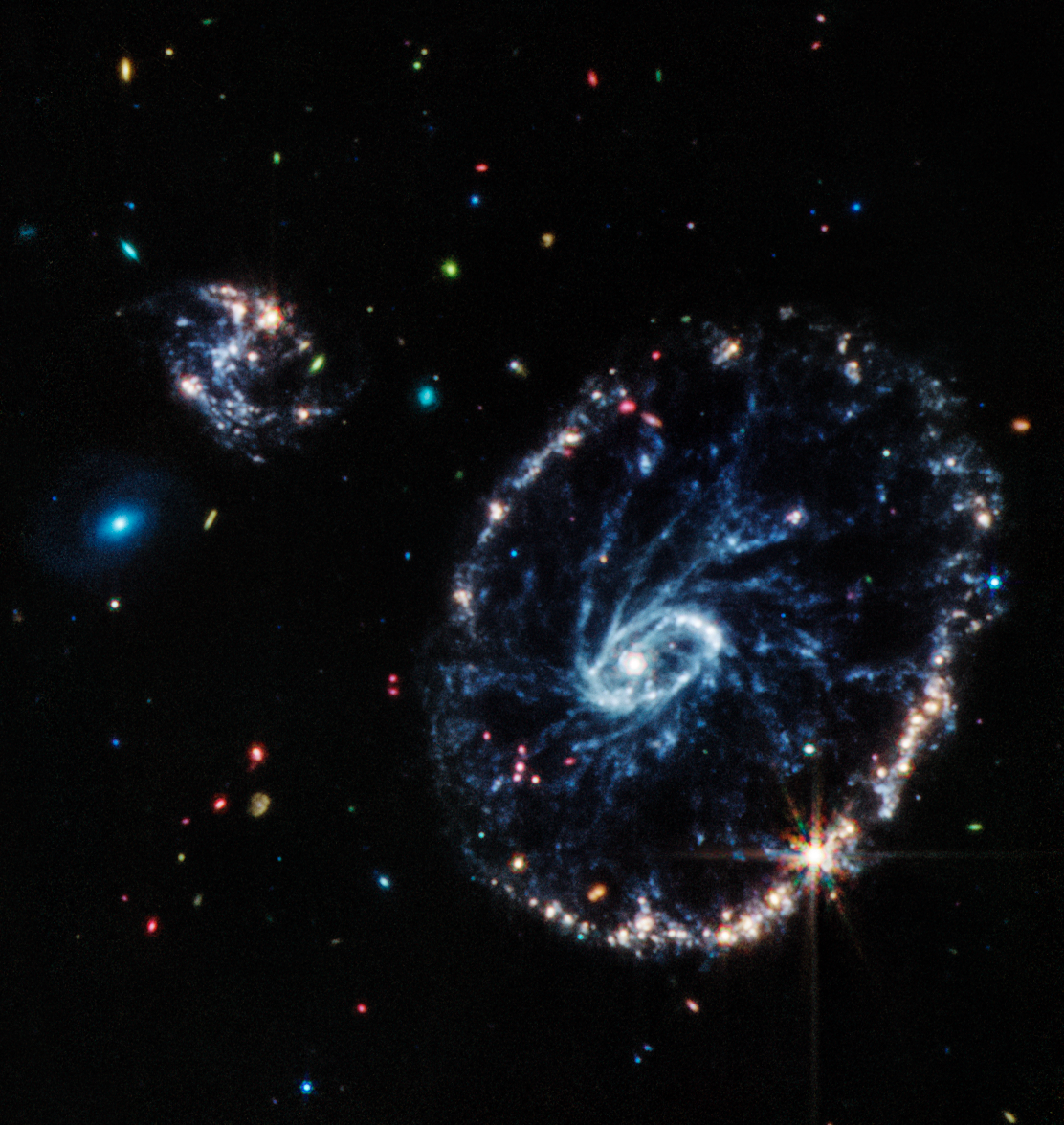
Webb Captures Stellar Gymnastics in The Cartwheel Galaxy - NASA
NASA’s James Webb Space Telescope has peered into the chaos of the Cartwheel Galaxy, revealing new details about star formation and the galaxy’s central black hole. Webb’s powerful infrared gaze produced this detailed image of the Cartwheel and two smaller companion galaxies against a backdrop...
Webb Captures Stellar Gymnastics in The Cartwheel Galaxy

A large pink, speckled galaxy resembling a wheel with with a small, inner oval, with dusty blue in between on the right, with two smaller spiral galaxies about the same size to the left against a black background.
Credits: NASA, ESA, CSA, STScI
Download the full-resolution, uncompressed version and supporting visuals from the Space Telescope Science Institute
NASA’s James Webb Space Telescope has peered into the chaos of the Cartwheel Galaxy, revealing new details about star formation and the galaxy’s central black hole. Webb’s powerful infrared gaze produced this detailed image of the Cartwheel and two smaller companion galaxies against a backdrop of many other galaxies. This image provides a new view of how the Cartwheel Galaxy has changed over billions of years.
The Cartwheel Galaxy, located about 500 million light-years away in the Sculptor constellation, is a rare sight. Its appearance, much like that of the wheel of a wagon, is the result of an intense event – a high-speed collision between a large spiral galaxy and a smaller galaxy not visible in this image. Collisions of galactic proportions cause a cascade of different, smaller events between the galaxies involved; the Cartwheel is no exception.
The collision most notably affected the galaxy’s shape and structure. The Cartwheel Galaxy sports two rings — a bright inner ring and a surrounding, colorful ring. These two rings expand outwards from the center of the collision, like ripples in a pond after a stone is tossed into it. Because of these distinctive features, astronomers call this a “ring galaxy,” a structure less common than spiral galaxies like our Milky Way.
The bright core contains a tremendous amount of hot dust with the brightest areas being the home to gigantic young star clusters. On the other hand, the outer ring, which has expanded for about 440 million years, is dominated by star formation and supernovas. As this ring expands, it plows into surrounding gas and triggers star formation.
Other telescopes, including the Hubble Space Telescope, have previously examined the Cartwheel. But the dramatic galaxy has been shrouded in mystery – perhaps literally, given the amount of dust that obscures the view. Webb, with its ability to detect infrared light, now uncovers new insights into the nature of the Cartwheel.
This image from Webb’s Mid-Infrared Instrument (MIRI) shows a group of galaxies, including a large distorted ring-shaped galaxy known as the Cartwheel. The Cartwheel Galaxy, located 500 million light-years away in the Sculptor constellation, is composed of a bright inner ring and an active outer ring. While this outer ring has a lot of star formation, the dusty area in between reveals many stars and star clusters.
Credits: NASA, ESA, CSA, STScI, Webb ERO Production Team
Download the full-resolution, uncompressed version and supporting visuals from the Space Telescope Science Institute
The Near-Infrared Camera (NIRCam), Webb’s primary imager, looks in the near-infrared range from 0.6 to 5 microns, seeing crucial wavelengths of light that can reveal even more stars than observed in visible light. This is because young stars, many of which are forming in the outer ring, are less obscured by the presence of dust when observed in infrared light. In this image, NIRCam data are colored blue, orange, and yellow. The galaxy displays many individual blue dots, which are individual stars or pockets of star formation. NIRCam also reveals the difference between the smooth distribution or shape of the older star populations and dense dust in the core compared to the clumpy shapes associated with the younger star populations outside of it.
Learning finer details about the dust that inhabits the galaxy, however, requires Webb’s Mid-Infrared Instrument (MIRI). MIRI data are colored red in this composite image. It reveals regions within the Cartwheel Galaxy rich in hydrocarbons and other chemical compounds, as well as silicate dust, like much of the dust on Earth. These regions form a series of spiraling spokes that essentially form the galaxy’s skeleton. These spokes are evident in previous Hubble observations released in 2018, but they become much more prominent in this Webb image.
Webb’s observations underscore that the Cartwheel is in a very transitory stage. The galaxy, which was presumably a normal spiral galaxy like the Milky Way before its collision, will continue to transform. While Webb gives us a snapshot of the current state of the Cartwheel, it also provides insight into what happened to this galaxy in the past and how it will evolve in the future.
The James Webb Space Telescope is the world's premier space science observatory. Webb will solve mysteries in our solar system, look beyond to distant worlds around other stars, and probe the mysterious structures and origins of our universe and our place in it. Webb is an international program led by NASA with its partners, ESA (European Space Agency) and the Canadian Space Agency.
Космический телескоп «Джеймс Уэбб» сфотографировал звезду Эаренделя (Earendel, или WHL0137-LS).


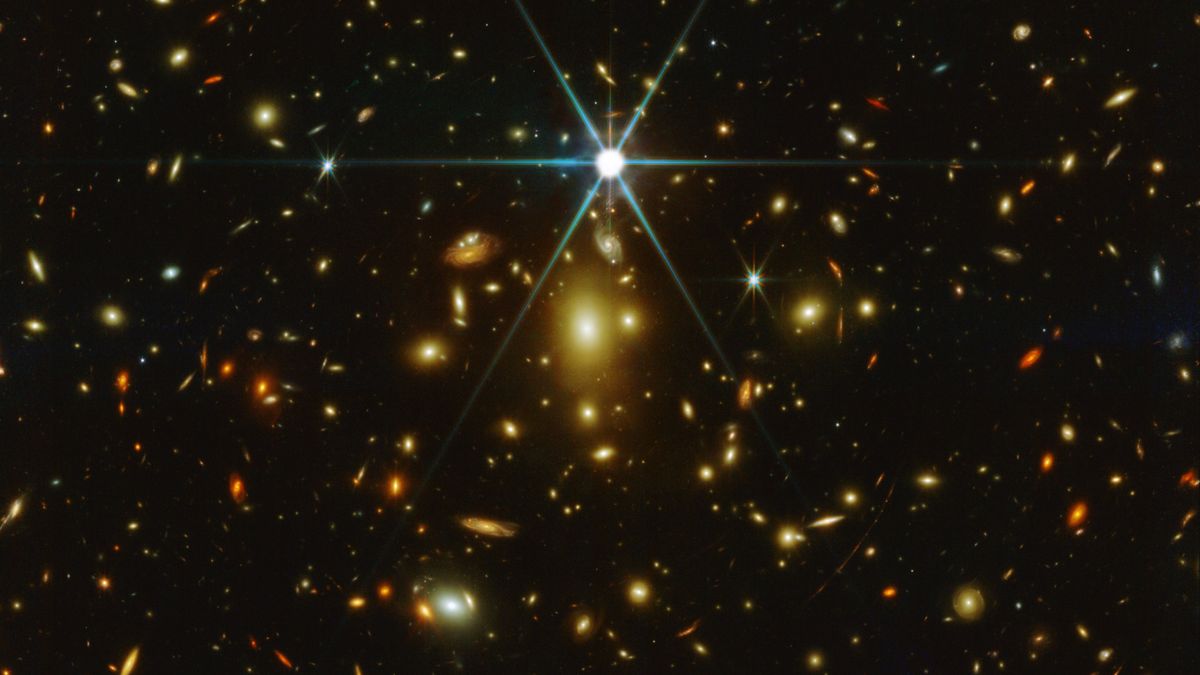
 www.space.com
www.space.com
На сегодняшний день это самое далекое известное нам светило во Вселенной. Расстояние до нее оценивается в 12.9 млрд световых лет. На таком расстоянии не легко рассмотреть даже целые галактики, сделать же снимок отдельной звезды удалось благодаря удачно расположенной гравитационной линзе, а также благодаря прекрасной оптике Уэбба.
Если анализ покажет, что Эарендель состоит только из первичного водорода и гелия, он станет первым известным нам светилом т. н. населения III, к которому относят самые первые звезды во Вселенной.


Название звезды не случайно. Астроном НАСА Мишелль Таллер подтвердила, что схожесть названия звезды и имени персонажа Толкина является намеренной. Эарендиль на своем корабле Вингилоте путешествовал по небу, освещаемый светом Сильмариля, став самой яркой звездой на небосводе.

James Webb Space Telescope glimpses Earendel, the most distant star known in the universe
The star's discovery by the Hubble Space Telescope was only announced earlier this year.
Не в ту тему поставил...огневой тест.
Получен новый снимок сливающихся галактик с ближайшей к нам парой сверхмассивных черных дыр


Галактика NGC 7727 неоднократно становилось объектом наблюдения астрономов. Однако новые изображения, полученные телескопом VLT с использованием инструмента Focal Reducer and Low Dispersion Spectrograph 2 (FORS2), отличаются повышенной детализацией структур, сформированных в ходе столкновения галактик.
Это слияние началось около одного миллиарда лет назад. Пара, образующая уже единую галактику NGC 7727, находится на расстоянии 89 миллионов световых лет от нас. Особый интерес для изучения вызывает галактический центр, где находятся две сверхмассивные черные дыры. Это самая близкая к нам пара гравитационно взаимодействующих сверхмассивных черных дыр.
В результате слияния форма галактик стала неправильной, внешние их рукава словно отслоились, что напоминает своего рода объятия. При этом расстояние между звездами достаточно велико, чтобы их столкновения не наблюдались. Однако сверхмассивные черные дыры оно ожидает. В настоящее время их разделяет 1600 световых лет, и они по спирали постепенно сближаются. Ожидается, что примерно через 250 миллионов лет произойдет их столкновение



Астрономы впервые зафиксировали фотонное кольцо у черной дыры
Астрономы обнаружили яркое кольцо света из фотонов на снимке черной дыры галактики M87, который был сделан в 2019 году телескопом Event Horizon. Результаты исследования опубликованы в The Astrophysical Journal.
Астрономы впервые зафиксировали фотонное кольцо у черной дыры
Астрономы обнаружили яркое кольцо света из фотонов на снимке черной дыры галактики M87, который был сделан в 2019 году телескопом Event Horizon. Результаты исследования опубликованы в The Astrophysical Journal.
Ученые использовали дополнительные программные методы и алгоритмы визуализации для восстановления и детализации изображения. Они также использовали данные 2017 года, полученные с помощью глобальной сети телескопов EHT (Телескоп горизонта событий). Эта сеть состоит из восьми связанных между собой обсерваторий в разных частях Земли, которые изучают одни и те же космические объекты.
На новом изображении видно фотонное кольцо, состоящее из ряда все более ярких подколец, формирующих целую картину. Его не было видно на изображении 2019 года, однако ученые знали, что они есть, так как это предполагала теория Эйнштейна.
Согласно ей, черные дыры окружены концентрическими кругами из фотонов, отброшенных мощной гравитацией черной дыры. Несмотря на то, что их существование было предсказано достаточно давно, до сих пор никому не удавалось их наблюдать.
Фото Юпитера с "Джеймса Уэбба"
Круто !
BBC News - Таким Юпитер еще не видели: телескоп "Джеймс Уэбб" прислал снимки самой большой планеты Солнечной системы
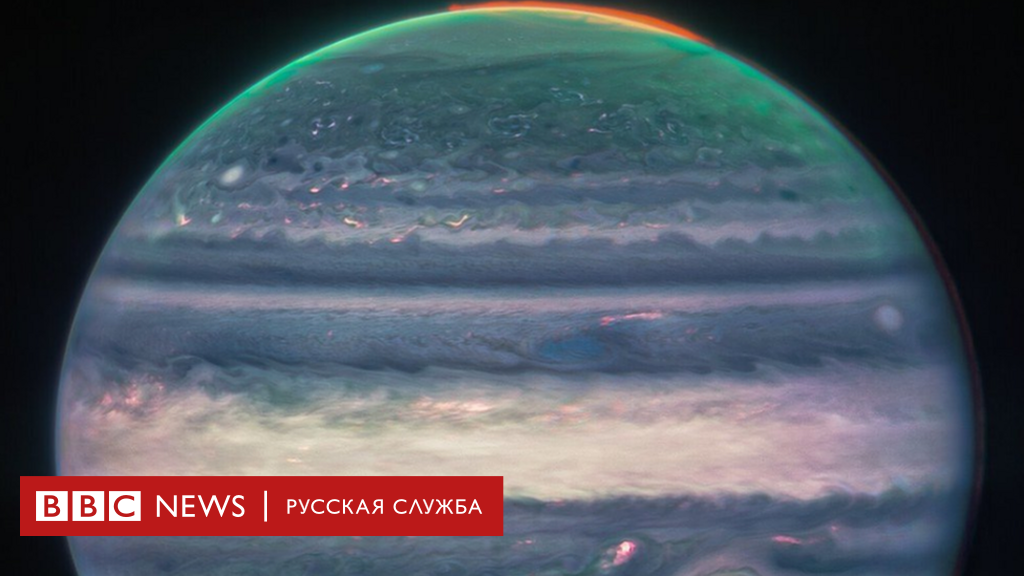
 www.bbc.co.uk
www.bbc.co.uk
Круто !
BBC News - Таким Юпитер еще не видели: телескоп "Джеймс Уэбб" прислал снимки самой большой планеты Солнечной системы

Таким Юпитер еще не видели: "Джеймс Уэбб" прислал снимки самой большой планеты Солнечной системы - BBC News Русская служба
На снимках, сделанных телескопом, на планете видны полярные сияния, вихри и туманы - с невиданной доселе детализацией.
/cdn.vox-cdn.com/uploads/chorus_asset/file/23761934/main_image_star_forming_region_carina_nircam_final_1280.jpeg)
The James Webb Space Telescope runs JavaScript, apparently
It actually seems like a clever system.
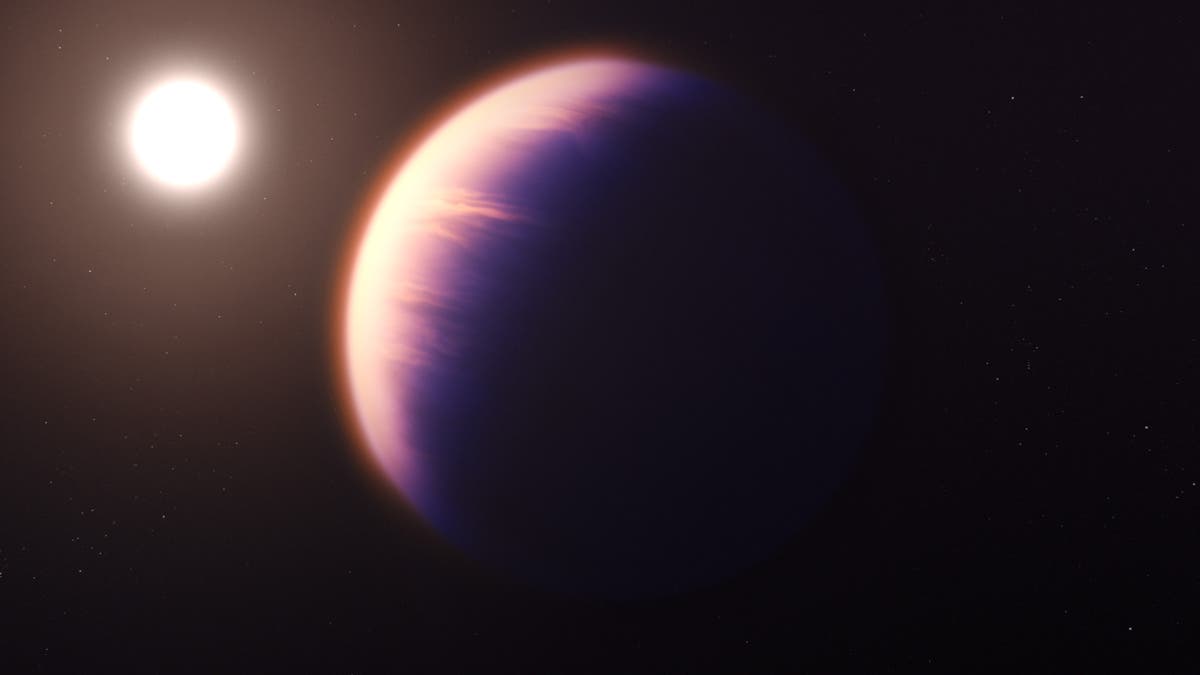
Nasa’s Webb telescope finds gas on alien world for first ever time
The first clear detection of the green house gas carbon dioxide in a distant gas giant planet bodes well for future Webb telescope studies of rocky exoplanets more similar to Earth
The first clear detection of the green house gas carbon dioxide in a distant gas giant planet bodes well for future Webb telescope studies of rocky exoplanets more similar to Earth
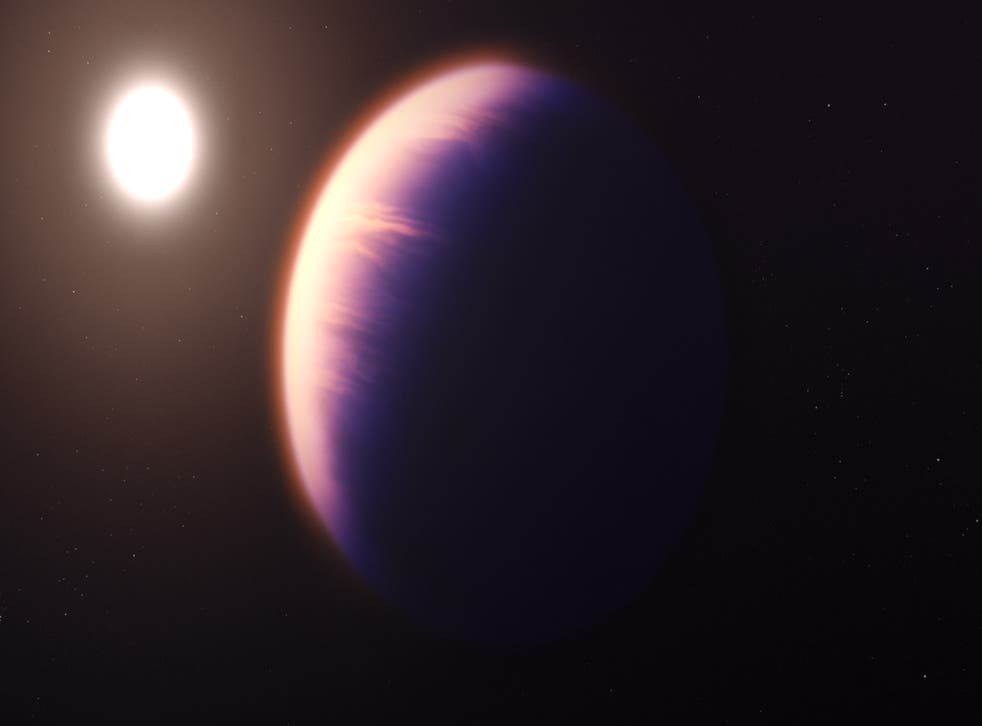
An artist’s illustration of the gas giant exoplanet Wasp 39b
(Nasa)
Sign up to our free WhatsApp news alerts and daily briefing updates
I would like to be emailed about offers, events and updates from The Independent. Read our privacy notice
Nasa’s James Webb Space Telescope has detected carbon dioxide on an alien world, for the first time.
A team of more than 30 scientists analyzing the spectrum of the gas giant exoplanet Wasp 39b have reported finding a clear signal of an abundance of carbon dioxide in the planets atmosphere. Previous studies by the
Астрономы отыскали наилучшего кандидата в экзопланету-океан
Астрономы при помощи наземных и космических телескопов подтвердили открытие суперземли TOI-1452b у красного карлика. По мнению ученых, она лучше всего описывается моделью экзопланеты с глобальным водным океаном, масса которого составляет 22 процента от общей массы планеты. Ожидается, что подтвердить этот вывод смогут будущие спектроскопические наблюдения инфракрасной обсерватории «Джеймс Уэбб». Статья опубликована в The Astronomical Journal.
Астрономы отыскали наилучшего кандидата в экзопланету-океан
Астрономы при помощи наземных и космических телескопов подтвердили открытие суперземли TOI-1452b у красного карлика. По мнению ученых, она лучше всего описывается моделью экзопланеты с глобальным в…
 aboutspacejornal.net
aboutspacejornal.net
Телескоп «Джеймс Уэбб» впервые использовали для съемки экзопланеты


Космическая обсерватория «Джеймс Уэбб» продолжает стартовую серию научных наблюдений, которые в том числе демонстрируют возможности телескопа. Впервые он был использован для получения прямого изображения планеты за пределами Солнечной системы. В работе представлены снимки, сделанные в четырех различных инфракрасных диапазонах, отражающих разные особенности объекта. Звездочкой на снимке помечено расположение звезды-хозяйки, закрытой коронографом, чтобы ее свет не мешал наблюдениям.
В качестве объекта наблюдений была выбрана экзопланета HIP 65426b, которая находится на расстоянии около 385 световых лет от нас. Она имеет размер в 6-12 раз больше Юпитера. Это молодая планета, которой от 15 до 20 миллионов лет. Астрономы открыли планету еще в 2017 году с помощью инструмента SPHERE на телескопе VLT ESO.
В настоящее время исследователи, заказавшие наблюдение этой планеты с помощью «Уэбба», анализируют полученные данные и готовят научную публикацию на их основе. В ней будут лучше описаны свойства и характеристики этого молодого гиганта, который находится на расстоянии примерно в 100 а.е. от своей звезды-хозяйки. Такое расстояние позволяет достаточно легко отделить свет звезды от планеты с помощью коронографов, которыми оснащены камеры «Уэбба» NIRCam и MIRI.
Первые два снимка были сделаны на длинах волн 3 и 4,44 мкм с помощью NIRCam. Наблюдаемые на них полосы являются артефактами телескопа, которых нет физически. Третий и четвертый снимок были сделаны инструментом MIRI на длинах волн 11,4 и 15,5 мкм. Они артефактов не имеют.
«Самое интересное, что мы только в начале пути, - сказал астроном Аарин Картер из Калифорнийского университета в Санта-Круз. – Впереди еще много изображений экзопланет, которые сформируют наше общее понимание их физики, химии и формирования. Возможно, мы обнаружим ранее неизвестные планеты».


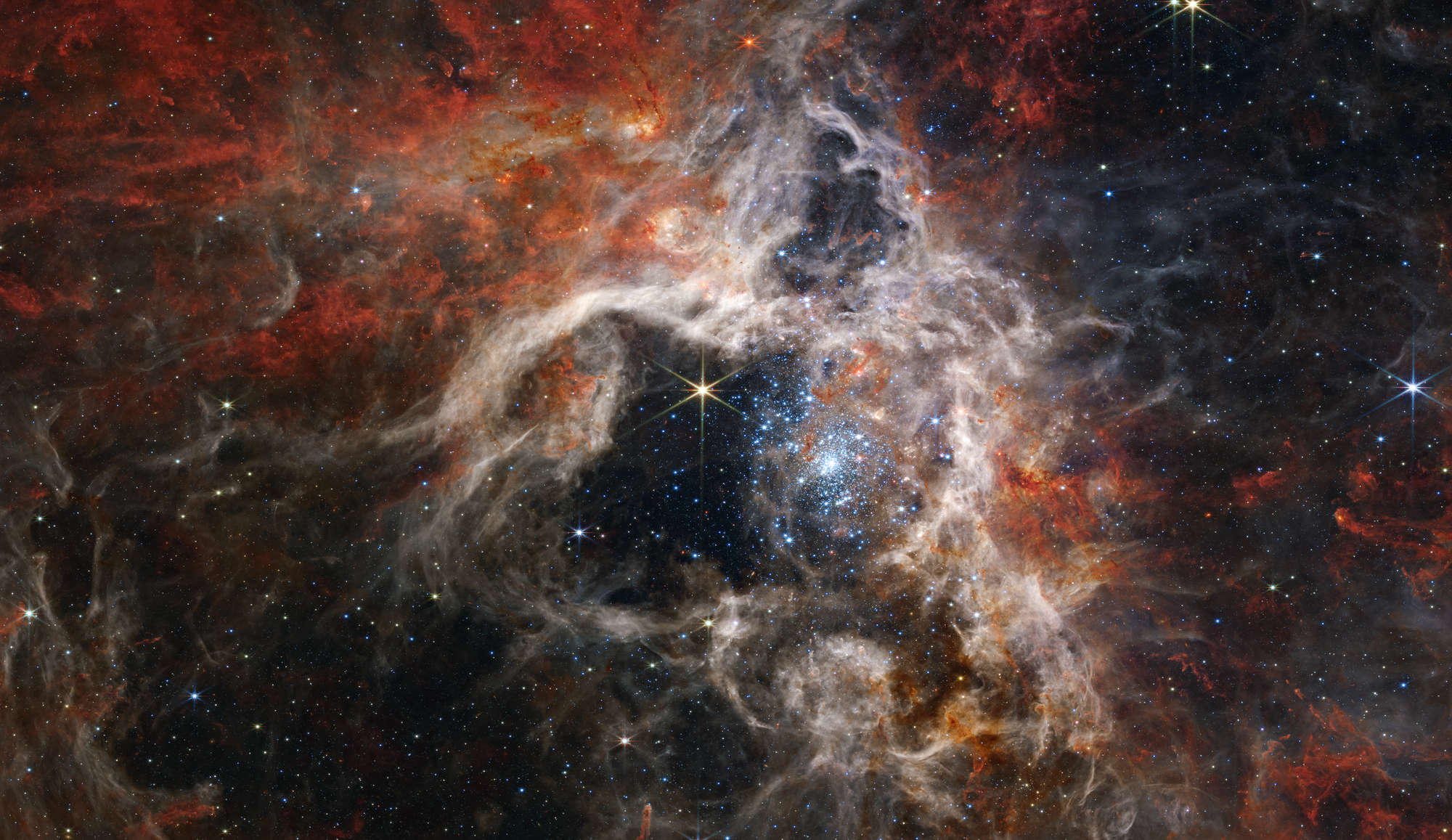
A Cosmic Tarantula, Caught by NASA’s Webb - NASA
Once upon a space-time, a cosmic creation story unfolded: Thousands of never-before-seen young stars spotted in a stellar nursery called 30 Doradus, captured by NASA’s James Webb Space Telescope. Nicknamed the Tarantula Nebula for the appearance of its dusty filaments in previous telescope...

In this mosaic image stretching 340 light-years across, Webb’s Near-Infrared Camera (NIRCam) displays the Tarantula Nebula star-forming region in a new light, including tens of thousands of never-before-seen young stars that were previously shrouded in cosmic dust. The most active region appears to sparkle with massive young stars, appearing pale blue.
Once upon a space-time, a cosmic creation story unfolded: Thousands of never-before-seen young stars spotted in a stellar nursery called 30 Doradus, captured by NASA’s James Webb Space Telescope. Nicknamed the Tarantula Nebula for the appearance of its dusty filaments in previous telescope images, the nebula has long been a favorite for astronomers studying star formation. In addition to young stars, Webb reveals distant background galaxies, as well as the detailed structure and composition of the nebula’s gas and dust.
At only 161,000 light-years away in the Large Magellanic Cloud galaxy, the Tarantula Nebula is the largest and brightest star-forming region in the Local Group, the galaxies nearest our Milky Way. It is home to the hottest, most massive stars known. Astronomers focused three of Webb’s high-resolution infrared instruments on the Tarantula. Viewed with Webb’s Near-Infrared Camera (NIRCam), the region resembles a burrowing tarantula’s home, lined with its silk. The nebula’s cavity centered in the NIRCam image has been hollowed out by blistering radiation from a cluster of massive young stars, which sparkle pale blue in the image. Only the densest surrounding areas of the nebula resist erosion by these stars’ powerful stellar winds, forming pillars that appear to point back toward the cluster. These pillars contain forming protostars, which will eventually emerge from their dusty cocoons and take their turn shaping the nebula.
Webb’s Near-Infrared Spectrograph (NIRSpec) caught one very young star doing just that. Astronomers previously thought this star might be a bit older and already in the process of clearing out a bubble around itself. However, NIRSpec showed that the star was only just beginning to emerge from its pillar and still maintained an insulating cloud of dust around itself. Without Webb’s high-resolution spectra at infrared wavelengths, this episode of star formation-in-action could not have been revealed.
At the longer wavelengths of light captured by its Mid-Infrared Instrument (MIRI), Webb focuses on the area surrounding the central star cluster and unveils a very different view of the Tarantula Nebula. In this light, the young hot stars of the cluster fade in brilliance, and glowing gas and dust come forward. Abundant hydrocarbons light up the surfaces of the dust clouds, shown in blue and purple.
Credits: NASA, ESA, CSA, STScI, Webb ERO Production Team
Download the full-resolution, uncompressed version and supporting visuals from the Space Telescope Science Institute
The region takes on a different appearance when viewed in the longer infrared wavelengths detected by Webb’s Mid-infrared Instrument (MIRI). The hot stars fade, and the cooler gas and dust glow. Within the stellar nursery clouds, points of light indicate embedded protostars, still gaining mass. While shorter wavelengths of light are absorbed or scattered by dust grains in the nebula, and therefore never reach Webb to be detected, longer mid-infrared wavelengths penetrate that dust, ultimately revealing a previously unseen cosmic environment.
One of the reasons the Tarantula Nebula is interesting to astronomers is that the nebula has a similar type of chemical composition as the gigantic star-forming regions observed at the universe’s “cosmic noon,” when the cosmos was only a few billion years old and star formation was at its peak. Star-forming regions in our Milky Way galaxy are not producing stars at the same furious rate as the Tarantula Nebula, and have a different chemical composition. This makes the Tarantula the closest (i.e., easiest to see in detail) example of what was happening in the universe as it reached its brilliant high noon. Webb will provide astronomers the opportunity to compare and contrast observations of star formation in the Tarantula Nebula with the telescope’s deep observations of distant galaxies from the actual era of cosmic noon.
Despite humanity’s thousands of years of stargazing, the star-formation process still holds many mysteries – many of them due to our previous inability to get crisp images of what was happening behind the thick clouds of stellar nurseries. Webb has already begun revealing a universe never seen before, and is only getting started on rewriting the stellar creation story.
The James Webb Space Telescope is the world's premier space science observatory. Webb will solve mysteries in our solar system, look beyond to distant worlds around other stars, and probe the mysterious structures and origins of our universe and our place in it. Webb is an international program led by NASA with its partners, ESA (European Space Agency) and the Canadian Space Agency.
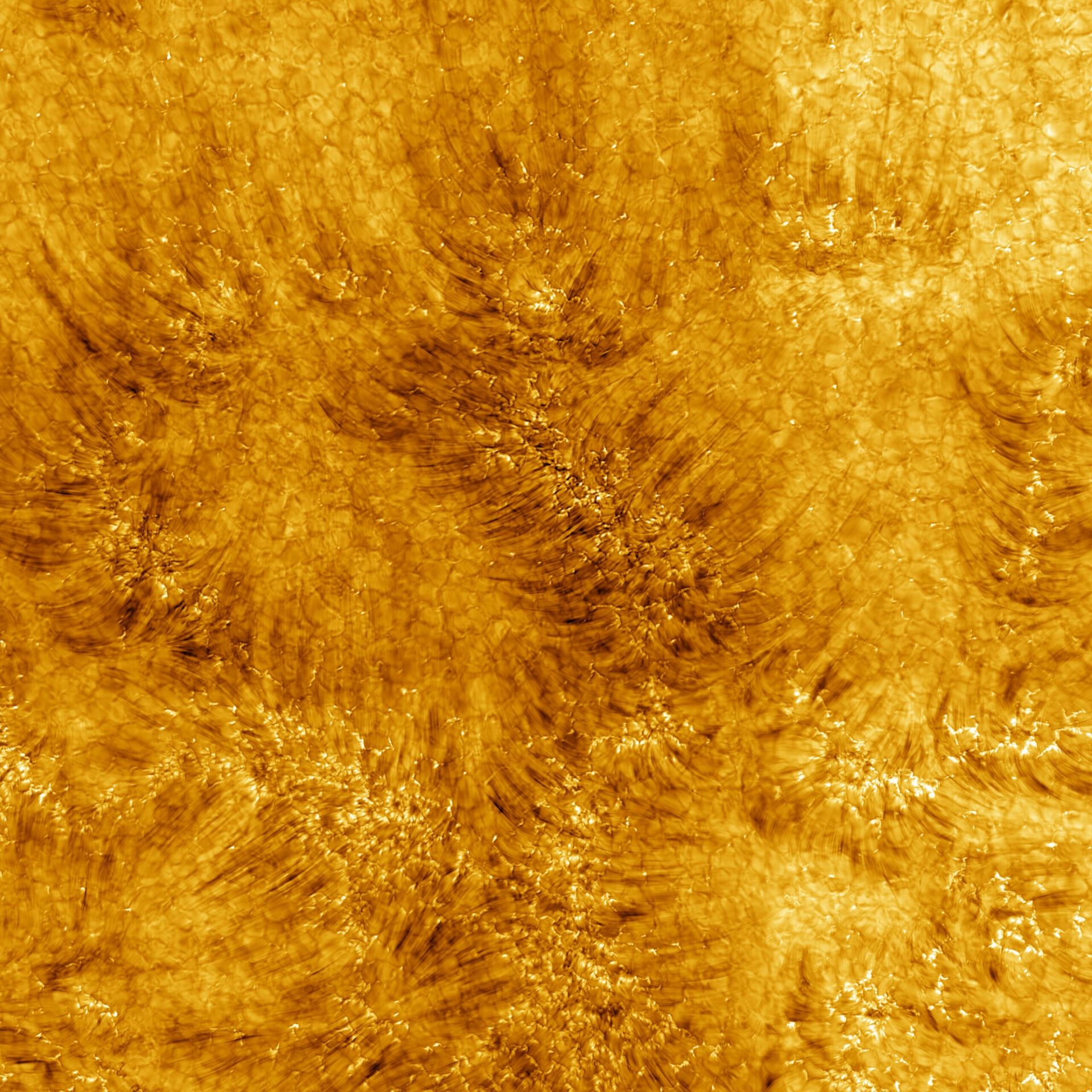
Опубликованы самые детальные фотографии Солнца
Телескоп DKIST сделал самые детальные в истории фотографии солнечной хромосферы. По словам астрономов, они «стоят больше тысячи слов».
Национальный научный фонд США опубликовал несколько поразительных фотографий, сделанных телескопом DKIST (Daniel K. Inouye Solar Telescope). На сегодняшний день это наиболее детальные изображения солнечной хромосферы. По словам астрономов, они «стоят больше тысячи слов».
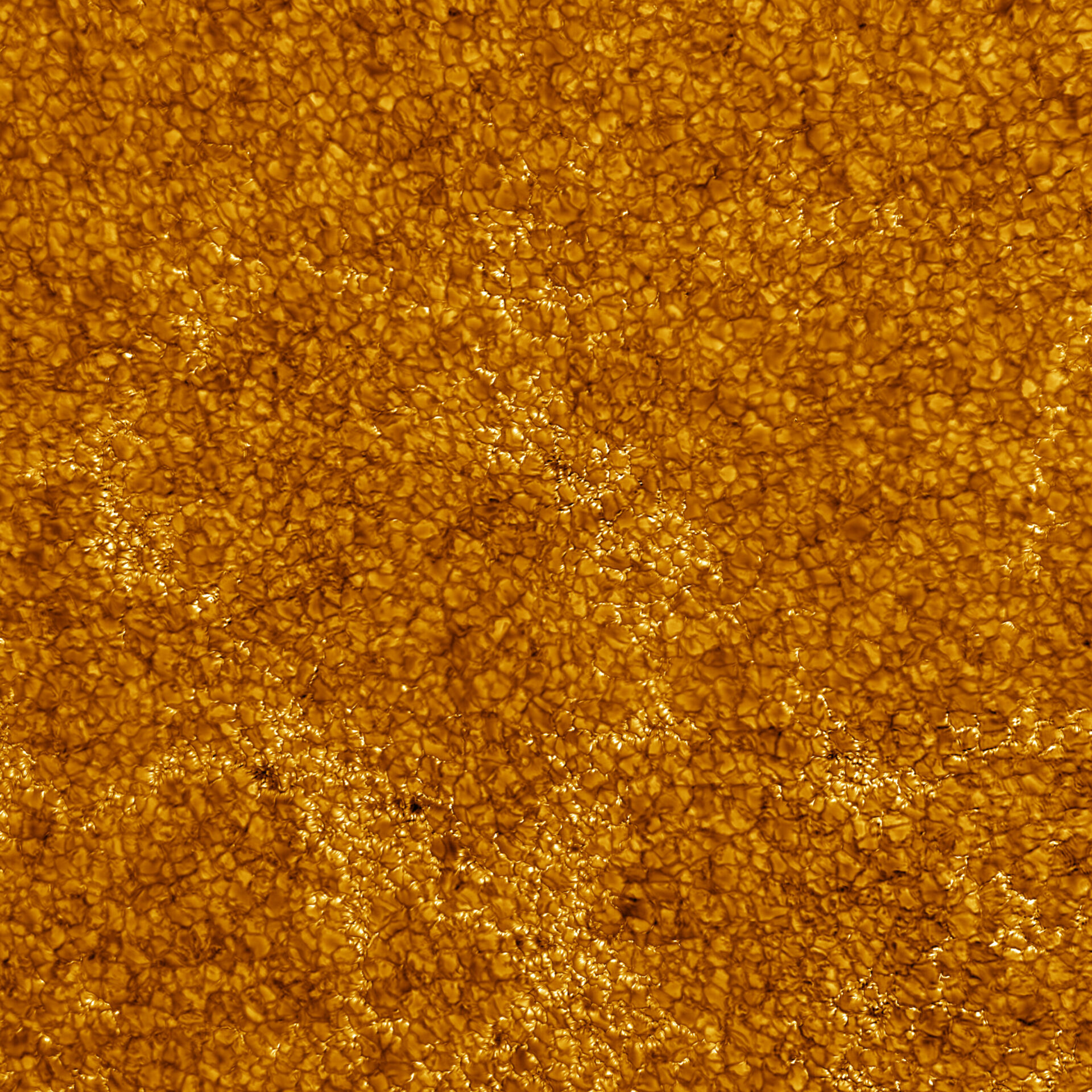 Снимок солнечной поверхности, сделанный телескопом DKIST. Источник: NSO/AURA/NSF
Снимок солнечной поверхности, сделанный телескопом DKIST. Источник: NSO/AURA/NSFНа сегодняшний день DKIST является крупнейшим и наиболее совершенным в мире оптическим телескопом, способным снимать поверхность Солнца с беспрецедентным разрешением. Это достигается за счет использования 4,24-метрового главного зеркала, а также ультрасовременной системы адаптивной оптики. DKIST уже несколько раз демонстрировал свои способности, сделав наиболее детальное в истории изображение солнечного пятна.
Наиболее детальные снимки Солнца
Публикация новых снимков DKIST оказалась приурочена к состоявшейся 31 августа инаугурационной церемонии. Она была проведена по случаю завершения первой фазы ввода телескопов в эксплуатацию.
Снимок солнечной хромосферы, сделанный телескопом DKIST. Источник: NSO/AURA/NSF
Новые снимки DKIST демонстрируют хромосферу — внешнюю оболочку Солнца, протяженностью около 10 000 км, окружающею его фотосферу (видимую поверхность). Происхождение названия этой части солнечной атмосферы связано с ее красноватым цветом, вызванным тем, что в ее видимом спектре доминирует красная Hα (H-альфа) линия излучения водорода. Верхняя граница хромосферы не имеет выраженной гладкой поверхности, из неё постоянно происходят горячие выбросы, называемые спикулами.
Снимок солнечной хромосферы, сделанный телескопом DKIST. Для лучшего понимания масштабов на фото добавлено изображение Земли. Источник: NSO/AURA/NSF
Изображение DKIST охватывает участок протяженностью 82,5 тысячи км. Это почти в 7 раз больше диаметра Земли. Снимок был сделан на длине волны 486,13 нм, его разрешение составляет 18 км. Для лучшего понимания масштабов, сотрудники обсерватории опубликовали дополнительную версию фото с наложенной на него Землей.
Снимок солнечной поверхности, сделанный телескопом DKIST. Для лучшего понимания масштабов на фото добавлено изображение Земли. Источник: NSO/AURA/NSF
Также было опубликовано и второе изображение, демонстрирующее аналогичный по размерам участок солнечной поверхности. Его получили при помощи видимого широкополосного тепловизора. Снимок был сделан на длине волны 430 нм, его разрешение составляет 18 км.
Вы также можете почитать о том, как зонд Solar Orbiter столкнулся с корональным выбросом массы.
По материалам https://nso.edu


Опубликованы самые детальные фотографии Солнца
Телескоп DKIST сделал самые детальные в истории фотографии солнечной хромосферы. По словам астрономов, они «стоят больше тысячи слов».universemagazine.com
Снимок солнечной поверхности, сделанный телескопом DKIST. Источник: NSO/AURA/NSF

Красота! ?
Надеюсь не окажется срезом ананаса....как тот срез колбасы


Опубликованы самые детальные фотографии Солнца
Телескоп DKIST сделал самые детальные в истории фотографии солнечной хромосферы. По словам астрономов, они «стоят больше тысячи слов».universemagazine.com
Снимок солнечной поверхности, сделанный телескопом DKIST. Источник: NSO/AURA/NSF

Телескоп «Джеймс Уэбб» сделал детальный снимок колец Нептуна



Космическая обсерватория «Джеймс Уэбб» сфотографировала Нептун в совершенно новом виде. В инфракрасном диапазоне очень четко заметны некоторые детали на самом Нептуне, а также система спутников планеты и ее колец. Помимо колец заметны и более слабые пылевые структуры.
«Прошло три десятилетия с тех пор, как мы в последний раз видели эти слабые пылевые кольца. И впервые мы видим их в инфракрасном диапазоне», - сказала планетолог Хайди Хаммель.
На снимке можно различить семь из 14 известных спутников Нептуна, среди которых на изображении явно доминирует самый крупный – Тритон. Фото было сделано камерой NIRCam в ближнем инфракрасном диапазоне, что позволяет заметить в атмосфере Нептуна следы высотных облаков из метанового льда, которые выглядят на этом снимке как яркие пятна и полосы. Причем некоторые из этих структур ранее не замечались, они могут указывать на определенные процессы в атмосфере, которые можно будет детальнее исследовать.
Дополнительная программа наблюдений за Нептуном и Тритоном у «Уэбба» запланирована на следующий год.



НАСА продолжает изучение возможности отклонения опасных астероидов, потенциально представляющих опасность Земле.
В данной программе двойных.
Путем изменения траектории сателлита и в соответствии с этим, ожидается смещение главного тела.
Удачи им в этом !

 en.m.wikipedia.org
en.m.wikipedia.org
BBC News - Зонд-камикадзе DART врезался в астероид в рамках научного эксперимента
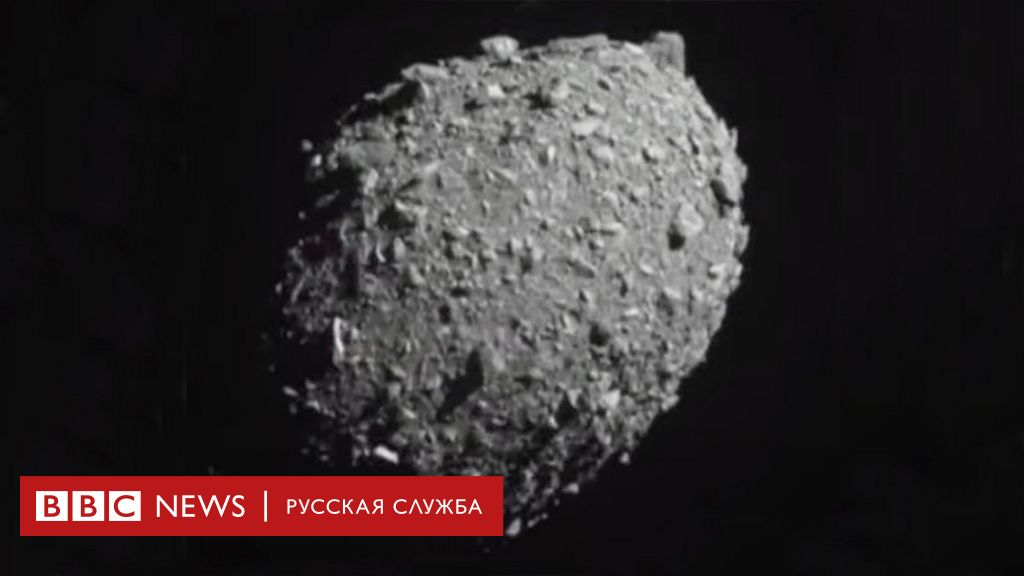
 www.bbc.co.uk
www.bbc.co.uk
В данной программе двойных.
Путем изменения траектории сателлита и в соответствии с этим, ожидается смещение главного тела.
Удачи им в этом !

Double Asteroid Redirection Test - Wikipedia
BBC News - Зонд-камикадзе DART врезался в астероид в рамках научного эксперимента

Зонд-камикадзе DART врезался в астероид в рамках научного эксперимента - BBC News Русская служба
Зонд американского космического агентства НАСА врезался в астероид Диморф. Первая попытка человечества изменить траекторию небесного тела и отработать механизм планетарной защиты завершилась.




